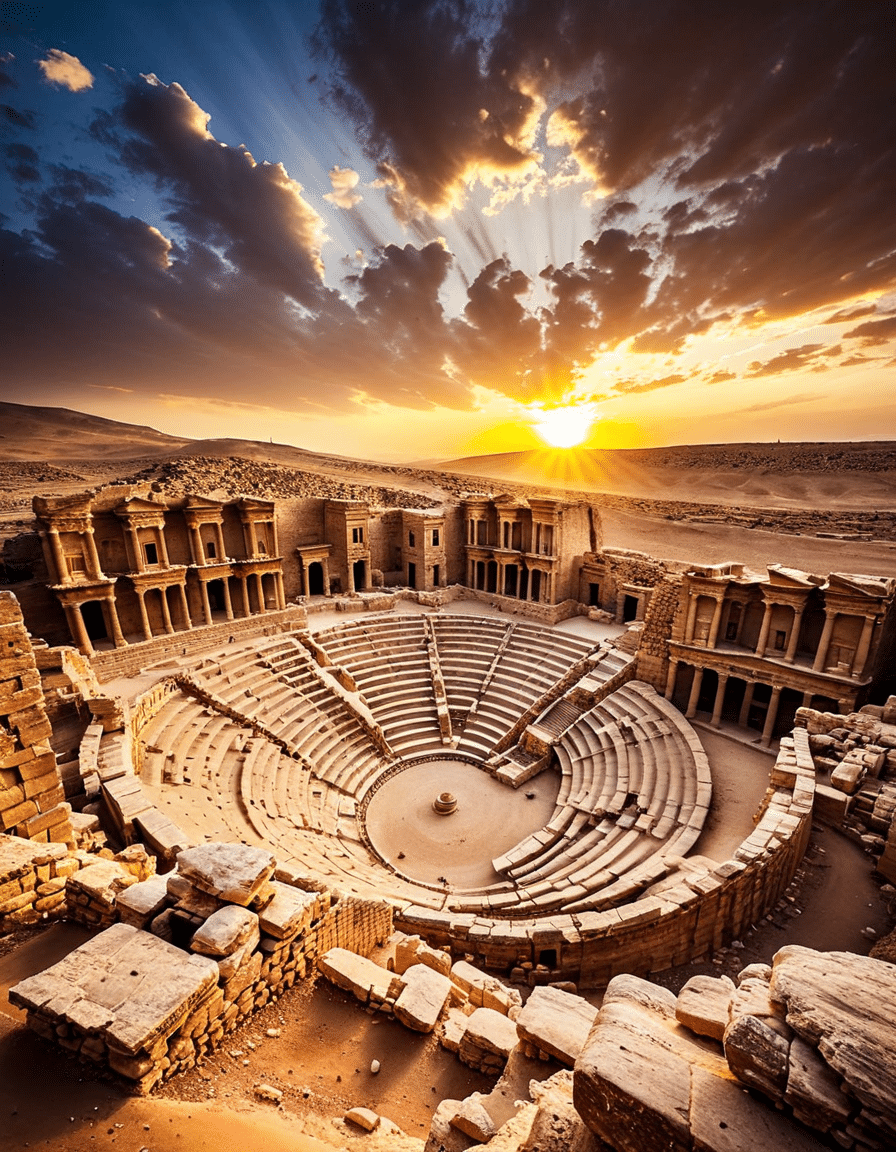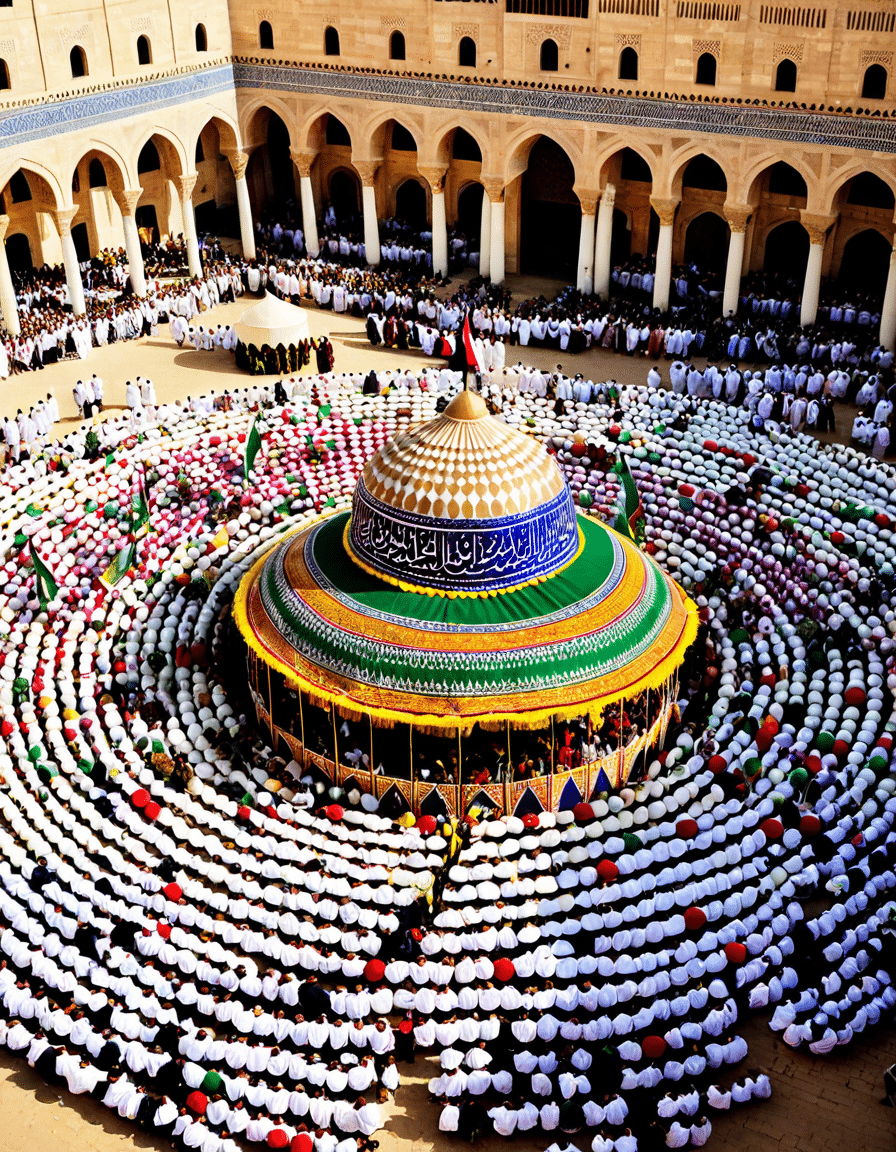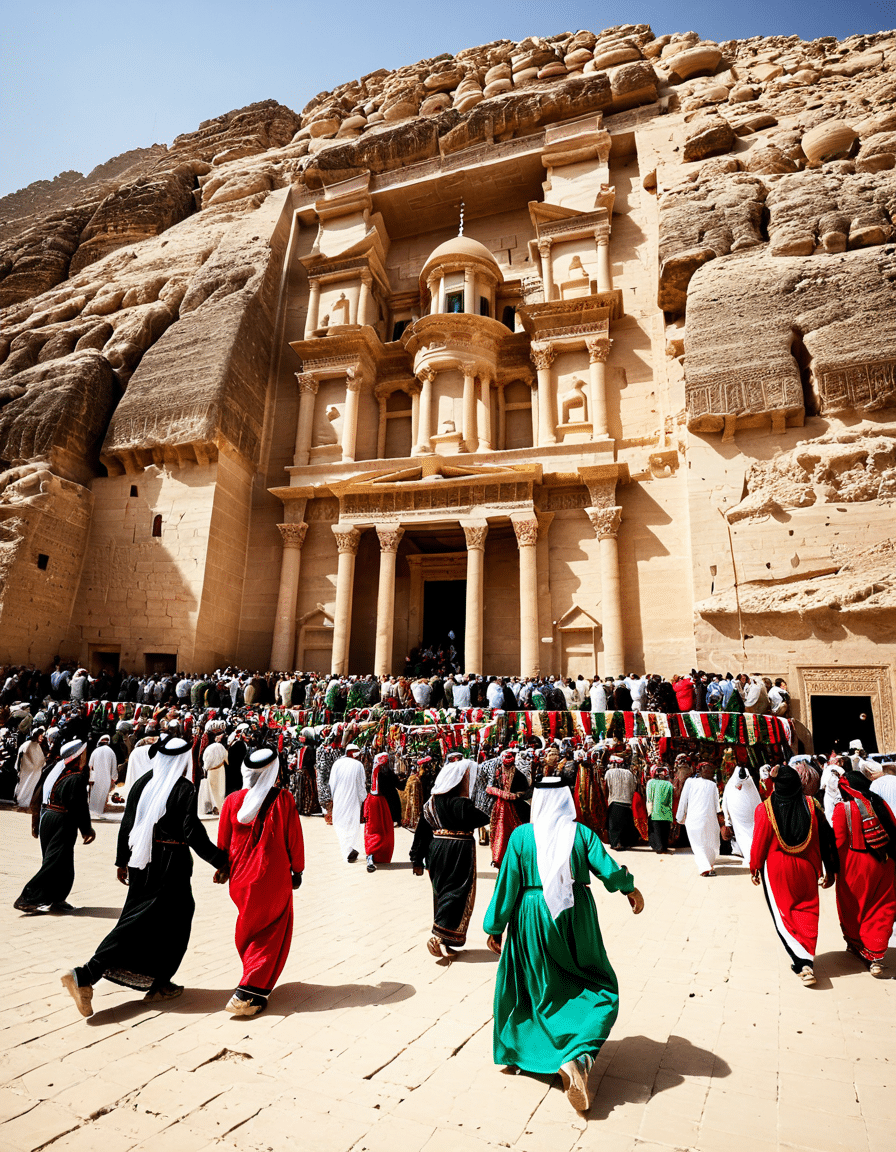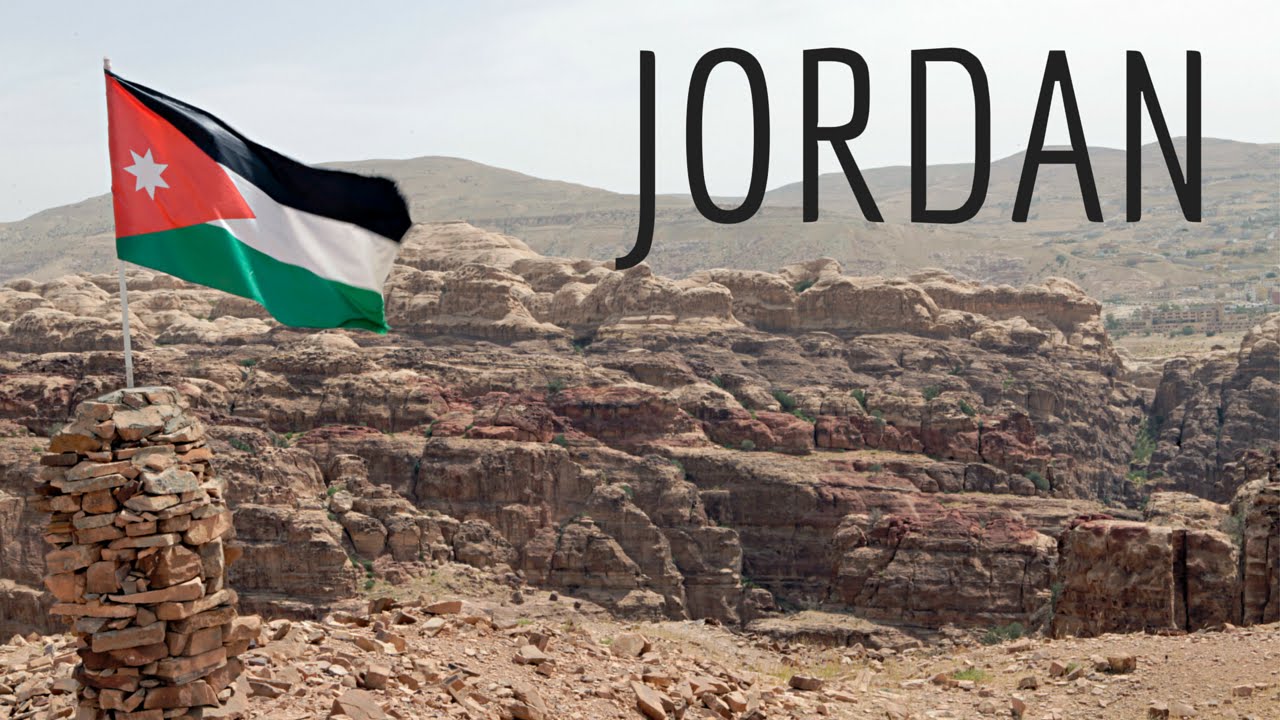Jordan, a jewel in the Middle East, is a land rich in culture and history. Nestled at the crossroads of significant trade routes, Jordan has been influenced by various civilizations over centuries, each leaving its mark on the nation’s identity. From ancient Petra to the bustling streets of Amman, the vibrancy of Jordan’s heritage shines through. Thus, amid regional complexities like the Yemen Houthi situation impacting the Red Sea, Jordan’s historical and cultural fabric continues to attract visitors from around the globe.
Jordan’s significance isn’t merely historical; it thrives through the stories told in its landscapes, architecture, and warm hospitality. With each landmark echoing tales of past glories, the country stands resilient, grappling with contemporary challenges while embracing its storied traditions. As you delve into Jordan’s captivating sites, you’ll notice how they interconnect with broader regional dynamics—especially the geopolitical discussions revolving around the Houthis’ recent strikes and their effects on commerce and tourism.
So, let’s embark on a journey to explore seven cultural and historical treasures in this vibrant nation that illustrate why Jordan remains a crucial pillar in the Middle East.
Top 7 Cultural and Historical Landmarks in Jordan
Jordan boasts an impressive lineup of cultural and historical sites that reflect its diverse heritage. Below are seven monumental sites that are must-visits for anyone exploring the country’s rich tapestry.

1. Petra: The Rose City
Petra, known as the “Rose City,” earns its name from the striking pink sandstone cliffs that kiss the horizon. This ancient Nabatean city is one of the New Seven Wonders of the World and offers a glimpse into advanced engineering and architectural innovation. Beyond the breathtaking facades carved from rock, recent archaeological findings reveal that Petra thrived as a key trading hub, highlighting a society that once flourished under the shadows of its artistic tombs.
Visitors can wander through the narrow gorge called the Siq, only to have their breath taken away by the stunning Treasury, which appears dramatically at the end of the passageway. This awe-inspiring structure isn’t just a sight for sore eyes; it tells the tale of a bustling market where ideas, cultures, and goods converged, enriching the region’s legacy.
2. Jerash: A Glimpse into Roman Jordan
Step back in time to Jerash, one of the best-preserved Roman provincial cities anywhere in the world. With colonnaded streets, grand amphitheaters, and elaborate temples, it’s easy to see why Jerash offers an incredible window into Roman life. The site has been continuously inhabited since the Hellenistic period, making it a cornerstone of Jordan’s historical identity.
Beyond its ruins, the city comes alive each year during the Jerash Festival of Culture and Arts, showcasing vibrant performances and artists from around the world. Here, Jordan is not just preserving history but celebrating it, creating a space for cultural expression that resonates with locals and tourists alike.
3. Wadi Rum: The Valley of the Moon
Wadi Rum, known as the Valley of the Moon, showcases stunning desert landscapes that have served as a backdrop for many films, such as “Lawrence of Arabia” and “The Martian.” But there’s more to this breathtaking terrain than cinematic allure; this UNESCO World Heritage site has rock inscriptions that trace back thousands of years, offering insights into the lives of early inhabitants like the Nabateans and Thamudic tribes.
Exploring Wadi Rum is like stepping onto another planet, with towering cliffs and captivating sunrise vistas. Tourists can enjoy activities like rock climbing or riding camels, immersing themselves in the rugged beauty that has captivated explorers throughout history.
4. The Dead Sea: A Natural Wonder
The Dead Sea is famed for being the saltiest body of water on Earth and lies at the lowest point on its surface. The high salt concentration not only makes floating an unusual experience but also blesses visitors with mineral-rich waters purported to have therapeutic properties. The area is steeped in history, with references to the Dead Sea found in ancient texts, making it a destination for both health enthusiasts and history buffs.
Resorts along the shores offer luxurious ways to experience this natural wonder, blending health and wellness with Jordanian hospitality. More than just an escape, this site underscores the delicate balance of nature and tourism in an age of environmental consciousness.
5. Mount Nebo: A Biblical Landmark
Mount Nebo carries profound religious significance as the site where Moses is said to have viewed the Promised Land before his death. This cherished pilgrimage location fills visitors with a sense of awe as they witness breathtaking views of the Jordan Valley and the Dead Sea. The panoramic scenery alone is worth the journey, but the spiritual essence of the site adds another layered experience.
The site features an ancient church, showcasing stunning mosaics that chronicle biblical history. Here, the past mingles with the present, creating a serene atmosphere where believers and travelers can reflect on the narratives that shaped faith and identity in the region.
6. Amman: A Modern Metropolis with Historic Roots
Amman seamlessly merges modern life with ancient history, proving that the capital city is as dynamic as the people who inhabit it. The Citadel of Amman stands tall, housing archaeological treasures like the Temple of Hercules and the Umayyad Palace. This blend of old and new serves to highlight Jordan’s evolution while preserving remnants of its past.
Cultural institutions, exhibits, and art galleries abound, showcasing Jordan’s vibrant contemporary scene. Visitors can stroll through bustling markets or relax in historic cafés, savoring the blend of flavors and experiences that manifest the spirit of modern Jordan.
7. Aqaba: Gateway to the Red Sea
The coastal city of Aqaba is a major port with significant economic implications for Jordan, representing its connection to both trade and leisure. However, the city’s strategic position has made it susceptible to regional conflicts, particularly the Yemen Houthi strikes, which have raised concerns about maritime security. These geopolitical tensions highlight the intersection of trade, tourism, and safety in a region rife with challenges.
Despite these concerns, Aqaba also buzzes with activity. From water sports to vibrant coral reefs, Aqaba remains a hotspot for tourists and locals, reflecting Jordan’s determination to ensure resilience amid regional uncertainties.
The Impact of Geopolitical Conflicts on Jordan’s Cultural Landscape
Jordan’s geographical positioning in the Middle East inevitably subjects it to regional tensions and conflicts that shape its socio-cultural fabric. The ongoing Yemen Houthi strikes threaten critical sectors like tourism and trade, prompting a renewed focus on preserving Jordan’s diverse heritage. Amid these swirling uncertainties, Jordanian officials have taken proactive measures to bolster security, striving to maintain an environment that is welcoming for both locals and tourists.
Furthermore, as international attention turns to conflicts, Jordan’s officials emphasize the importance of cultural diplomacy. Efforts to preserve historical sites and promote Jordan as a cultural destination highlight its resilience against the backdrop of regional upheaval.
The intersection of ancient legacies with modern challenges illuminates the necessity of safeguarding cultural heritage while navigating through turbulent times. The dedication to continuing this dialogue sets an example for other nations facing similar dilemmas.

Embracing a Vibrant Future Amidst Challenges
Jordan stands resilient, embodying a rich tapestry of culture and history even amid the most challenging geopolitical landscapes. Despite threats posed by movements like the Houthis in Yemen, Jordan has managed to safeguard its ancient roots while championing a modern identity. The ongoing endeavors to protect its historical landmarks and foster global engagement demonstrate an assertive approach to cultural preservation.
As Jordan continues to chart a course through these complex dynamics, its diverse heritage serves as a strong foundation for a vibrant future. By encouraging dialogue, understanding, and appreciation of its story, Jordan invites both visitors and locals to share in a journey that celebrates its remarkable past while looking forward to endless possibilities.
In the ever-evolving story of the Jordan Middle East, one thing is clear: the nation’s past remains interwoven tightly with its future, standing as a testament to enduring resilience and the human spirit.
For those interested in a deeper dive into various facets of global narratives, captivating stories like Bloom Into You Forget Me Not and Ever Pretty exemplify the multifaceted experiences found in cultural expressions. Additionally, discussions around pivotal moments like Donald Rumsfeld and the implications of Georgia Electoral Votes further illustrate how past and present connect to shape our world today.
Jordan remains a vibrant part of this larger narrative, inviting everyone to explore, engage, and appreciate its historical and cultural complexities.
Engaging Fun Trivia and Interesting Facts about Jordan Middle East
A Tapestry of History
Did you know that Jordan Middle East is home to the ancient city of Petra, famously carved into rose-red cliffs? This UNESCO World Heritage site is often called the “Rose City” and was once a thriving trading hub. That makes it a must-visit for history buffs diving into the cultural richness of the region. Speaking of culture, Jordan has also been influenced by various civilizations, including the Nabateans, Romans, and Byzantines, which means every corner tells a different story, much like the diverse happenings at Mcmurdo Station where scientists gather to unlock nature’s mysteries.
A Modern Twist
Today, Jordan Middle East isn’t just about ancient ruins; it’s also a modern dance of tradition and innovation. For instance, the country has been making its mark in the arts scene, giving rise to several vibrant cultural festivals each year. While enjoying a trip to Jordan, you might even stumble upon something as whimsical as Magia, showcasing Jordanian culture through exciting performances that blend telling tales and visual art. Furthermore, with burgeoning technology sectors sprouting in cities, Jordan remains poised as an exciting player in the global arena, providing fresh talents and perspectives.
Sports and Celebrations
Sports play a significant role in Jordanian culture, with a particular zest for football. The passion for the game mirrors that of enthusiastic fans who cheer on teams during crucial moments like the UEFA Champions League finale, where the exhilarating atmosphere of a Real Madrid champions league match might just echo across the world. This love for sports unites people, crossing the boundaries of age and background, ensuring there’s always a reason to celebrate. The vibrant culture truly showcases that in the Jordan Middle East, there’s always more than meets the eye!
So, whether you’re exploring archaeological wonders, enjoying cultural performances, or sharing a laugh during a football match, Jordan Middle East never ceases to amaze with its blend of history, modernity, and passion.







